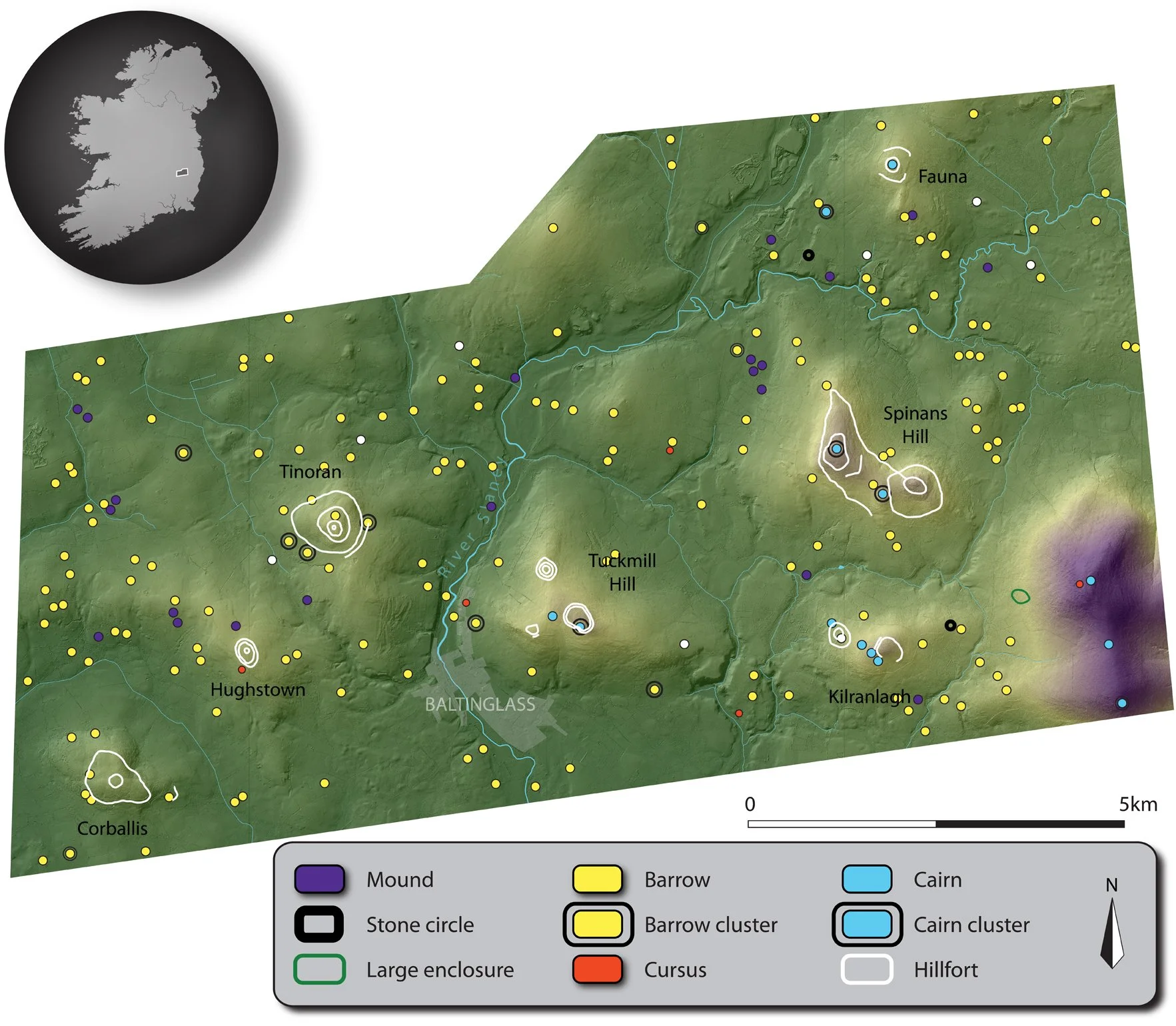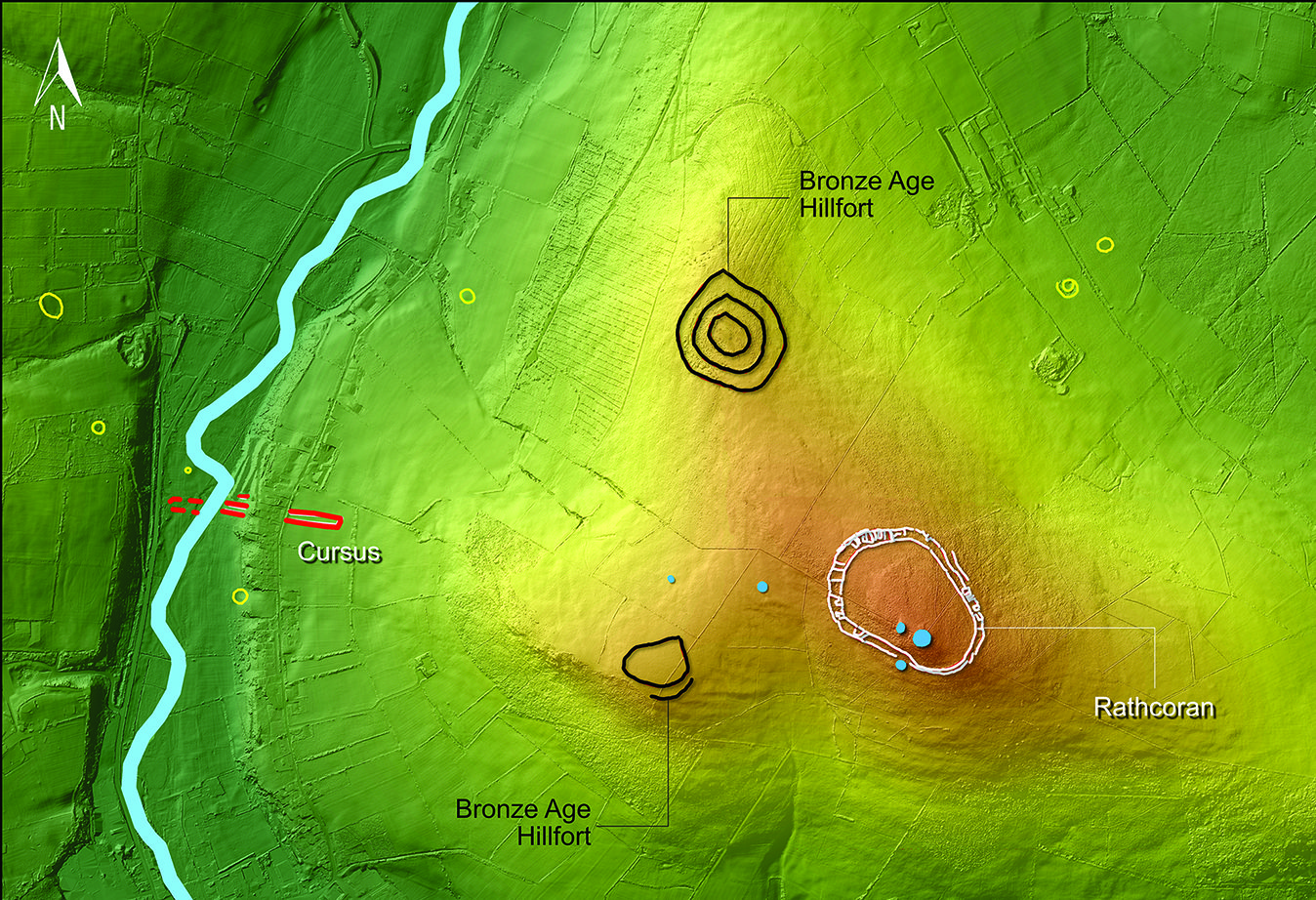A new study published in the journal Antiquity has revealed hundreds of previously unrecorded monuments at Baltinglass in County Wicklow, Ireland.
The Baltinglass area (known as ‘Ireland’s Hillfort Capital’) has a high density of Early Neolithic and Late Bronze Age monuments, however, very little evidence has been recorded that dates from the Middle Neolithic period.
According to Dr James O’Driscoll from the University of Aberdeen, the ancient landscape around Baltinglass was incredibly important to the Early Neolithic people, however, the lack of Middle Neolithic evidence suggests that this importance was lost until the Late Bronze Age.
Using advanced LiDAR technology, archaeologists have created detailed three-dimensional models, revealing hundreds of ancient sites that that been destroyed by thousands of years of ploughing.

Light Detection and Ranging (LiDAR), is a method of remote sensing using light in the form of a pulsed laser to measure ranges (variable distances) to the Earth. The differences in the laser return times and wavelengths can be used to compile a 3-D digital map of the landscape.
The most significant discovery from the survey is a cluster of five cursus monuments, the largest example found in both Britain and Ireland. The purpose of such monuments are speculative, but some theories propose that they were used in rituals connected with ancestor veneration, that they follow astronomical alignments, or that they served as buffer zones between ceremonial and occupation landscapes.

According to the study authors: “These five cursus monuments are clearly aligned with burial monuments in the landscape, as well as the rising and setting sun during major solar events such as the solstice.”
“This may have symbolised the ascent of the dead into the heavens and their perceived rebirth, with the cursus physically setting out the final route of the dead, where they left the land of the living and joined the ancestors beyond the visible horizon,” said Dr O’Driscoll.
Header Image Credit : Antiquity
Sources : Antiquity | Exploring the Baltinglass cursus complex: routes for the dead? – James O’Driscoll. https://doi.org/10.15184/aqy.2024.39





